

How to Grow and Care for Fruiting Cherry Trees. Prunus avium, Prunus cerasus I have about zero control when it comes to eating fresh fruit.
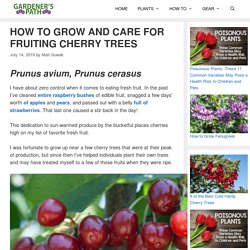
In the past I’ve cleaned entire raspberry bushes of edible fruit, snagged a few days’ worth of apples and pears, and passed out with a belly full of strawberries. That last one caused a stir back in the day! This dedication to sun-warmed produce by the bucketful places cherries high on my list of favorite fresh fruit. (1) Pinterest. (22) 6 Organic Ways to Prevent and Kill Cabbage Worms. Humane Ways to Keep Cats Out of Your Garden. They’re cute, fluffy, and the subject of hilarious YouTube videos, but cats don’t belong in your vegetable garden.

If you are a cat owner, then you’re already aware that they don’t answer to humans, so keeping them out of restricted areas is no easy task. However, to save those precious parsley plants, read this article written by an expert in feral cat management. We hope these work, but in case they don’t, we added a few techniques of our own. Did we miss any humane methods that work for you? If so, leave us a comment! Motion-activated sprinklers The favored option. How to Get Rid of Aphids: 13 Foolproof Ways. Oh, do I ever hate aphids.
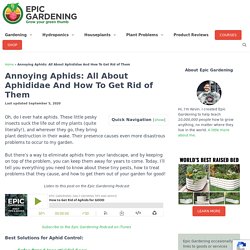
Homemade Deer Repellent and How to Use It. Photo: istockphoto.com Deer are delightful romping through the forest but can wreak havoc in a garden, decimating vegetables, fruit trees, landscaping beds, even “deer-resistant” shrubs and pine and holly trees if they’re hungry enough.
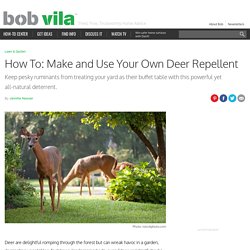
Commercial deer repellents tend to be pricey, so why not mix up your own, using ingredients you no doubt already have around the house? Follow our inexpensive, all-natural recipe for homemade deer repellent and then use as directed to keep Bambi and his buddies away! INGREDIENTS – Garden sprayer (or large spray bottle) – Warm water (1 gallon) – Eggs (3) – Milk or yogurt (3 tablespoons) – Crushed garlic cloves (3) – Cayenne pepper (3 tablespoons) – Blender – Strainer Step 1: Blend all ingredients.
Put eggs, milk or yogurt, garlic, and cayenne pepper along with two to three cups of water into a blender, and puree thoroughly. Step 2: “Ripen” the mixture. Step 3: Spray the solution. Spray plants liberally after morning dew or any rainfall has fully dried. 10 Homemade Organic Pesticides. Ever wonder what farmers did hundreds of years ago to fight off crop pests?
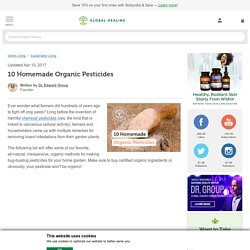
Long before the invention of harmful chemical pesticides (yes, the kind that is linked to cancerous cellular activity), farmers and householders came up with multiple remedies for removing insect infestations from their garden plants. Cutworms: How to Identify and Get Rid of Cutworms in Your Garden. How to Identify Cutworms Cutworms are common on a wide variety of vegetables and any fresh seedlings.
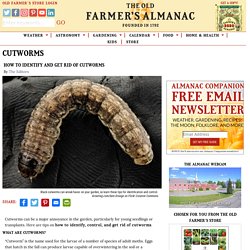
Controlling Codling Moth Organically. 32 Companion plants to grow with your peppers. Companion planting in the garden can serve a number of purposes, ranging from maximizing garden space to attracting beneficial insects and pollinators to luring insect pests away from other food crops.

Here are some great options for companion plants for peppers. Companion planting, or grouping complementary plants together in the garden to benefit each other, can be done for a variety of reasons, such as to provide shade or a wind barrier to other plants, or to cover the surface of the soil with edible plants to crowd out weeds, or even to help boost the growth, flavor, or yields of food crops. Tomato Hornworms: How To Get Rid Of Tomato Caterpillars. Getting Rid Of Bad Bugs With Beneficial Insects - Gardening Know How. Cabbage Looper Control. Description Widely distributed throughout North America, the cabbage looper (Trichoplusia ni) is a common and destructive pest most often found on cabbage-family, or cole crops.
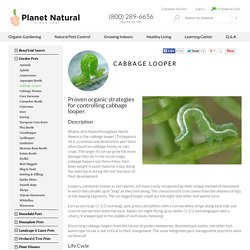
The larger its larvae grow the more damage they do. In the larval stage, cabbage loopers eat three-times their body weight in plant material a day, doing the most harm during the last few days of their development. Loopers, commonly known as inch worms, are most easily recognized by their unique method of movement in which they double up or “loop” as they inch along. This characteristic trait comes from the absence of legs at the looping segments. Larvae are large (1-1/2 inch long), pale green caterpillars with a narrow white stripe along each side and several narrow lines down the back. How To Make Homemade Tomato Fertilizer. Eggshells as Organic Pest Control - Get Busy Gardening. 2K+ The flea beetles have been worse than ever this summer, and the Japanese beetles are no fun either.

On top of that, the slugs have been turning my hostas into swiss cheese. (Ahhh, the joys of gardening) I need all the help I can get fighting these and other pests in the garden. There is a well known organic pesticide called diatomaceous earth, which is basically the fossilized remains of creatures that are ground into a fine powder. This works as an organic pesticide because it gets under the shells of beetles and acts like bits of glass to cut them up and kill them. Snails and slugs will also die if they slink across it, and it works as a deterrent. I eat a lot of eggs, so I have plenty of eggshells. Eggshells as organic pest control: Allow the eggshells to dry out before crushing them.
Grind the eggshells into a powder using a food processor or coffee grinder. The coffee grinder does a great job of grinding the eggshells into a powder. 15 Homemade Organic Gardening Sprays and Concoctions That Actually Work" Back when I started my first garden, a certain celebrity gardener and his books of gardening concoctions were all the rage.

You could tell when it was fundraising time on our local PBS station because they'd have him live in the studio, telling us that all we had to do was use items such as baby shampoo, instant tea, and whiskey, and we'd be able to grow our best garden ever. Those claims seemed pretty far-fetched to me back then, and now that I know a little more, I know that several of those concoctions were either just plain bad ideas or that one item in his recipe was the one that was actually doing the work while the rest were either unnecessary or possibly harmful to plants, insects and other soil-dwelling organisms. So please know that my b.s. radar is at high alert when I see anything about homemade gardening sprays and the like. With that in mind, here are 15 homemade, organic solutions for garden problems. A Better Way to Fertilize Your Garden: Homemade Organic Fertilizer - Organic Gardening.
Related Content A Mini-Cucumber Garden Even if your growing plot is short of space, you'll have room for mini cucumber plants. 10 Homemade Organic Pesticides. Ever wonder what farmers did hundreds of years ago to fight off crop pests? Long before the invention of harmful chemical pesticides (yes, the kind that is linked to cancerous cellular activity), farmers and householders came up with multiple remedies for removing insect infestations from their garden plants. The following list will offer some of our favorite, all-natural, inexpensive, organic methods for making bug-busting pesticides for your home garden. 1. Neem Ancient Indians highly revered neem oil as a powerful, all-natural plant for warding off pests. To make your own neem oil spray, simply add 1/2 an ounce of high quality organic neem oil and ½ teaspoon of a mild organic liquid soap (I use Dr. 2. For treating plants infested with spider mites, mix 2 tablespoons of Himalayan Crystal Salt into one gallon of warm water and spray on infected areas. 3.
Mix 10-30 ml of high-grade oil with one liter of water.